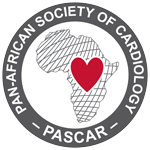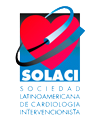A step towards a Hub and Spoke model for all? The Blueprint project.
 Alfonsina Candiello, Stent-Save a Life! Country Champion for Argentina and group leader for the Blueprint project, shares with us some insights on the undertaking. Interview by Sandrine Wallace.
Alfonsina Candiello, Stent-Save a Life! Country Champion for Argentina and group leader for the Blueprint project, shares with us some insights on the undertaking. Interview by Sandrine Wallace.
S. Wallace: “Alfonsina, you’ve been asked to lead the Blueprint project – could you please tell us more about the motives of the task?”
A. Candiello: Sandrine, first, let me say it is an honor and a great pleasure for me to be able to lead this project. I am very pleased to have the opportunity to work with people who have an extensive experience in the treatment of STEMI patients and learn from them as well.
As Country Champion of Stent-Save a Life! in Argentina, being part of the initiative has been a great help to start shaping the treatment approach of STEMI patients in our country.
I believe that participating in the blueprint project, that aims at helping other countries get organised, is a unique opportunity.Going back to your question, regionalising the treatment of STEMI patients is extremely challenging because it requires a multidisciplinary approach.
Furthermore, with the expansion of the SSL initiative globally, we face the challenge to understand the different realities of the countries regarding the treatment approach of STEMI patients in various regions of the world.Several countries in Europe have had universal health systems and now have an adequate organisation to treat STEMI patients according to the clinical guidelines recommendations.
On the other hand, some countries, such as Argentina and several others in Latin America, have a health system – composed of both a public and a private sector – which is very fragmented and with little integration between the parties; this hinders the regionalisation of the STEMI treatment despite having the necessary resources.To encourage the wide adoption of effective healthcare interventions for STEMI patients, the blueprint document will propose a methodology to help develop STEMI networks meeting the clinical guidelines’ recommendations.
S. Wallace: “What sort of blueprint are we referring to and what will be the scope?”
A. Candiello: As you all know, the Stent – Save a Life! global initiative is a unique platform for interventional cardiologists, government representatives, industry partners, patient groups along with patients themselves, to work together to help shape health care systems and medical practices for STEMI patients.
With this in mind, the idea is to create a really practical manual – focused on the logistics and the approach to follow in order to build an effective STEMI network based on the hub and spoke model – that will describe the roles and tasks of the relevant actors: PCI hospitals, non-PCI hospital, GP/GC and coordinated EMS services.
The core of this document will cover the ideal situation for infarction treatment, the role of each actor and the different treatment scenarios depending on the patient’s first medical contact.
The objective is to create a document that will apply to all the actors involved in the treatment of STEMI patients and, as it is intended to be used in the everyday life, it will thus require some flexibility to adapt to each country’s specifics.Finally, measuring and recording the times until reperfusion treatment is regarded as extremely useful to evaluate the performance of the system and therefore identify some opportunities for improvement.
We will therefore include, in the document, a section suggesting a set of variables to register that will help assess the efficiency of each network and set a baseline to define improvement strategies for the future.
S. Wallace: “Could you explain to us how this document will concretely help the countries?”
A. Candiello: I think this document will be extremely useful for the cardiology community as it will lay the foundations to develop effective STEMI networks and, thus, improve the access of STEMI patients to a quality reperfusion treatment.
In many countries without any STEMI network, the initiatives to develop such an organisation arise from scientific societies or from a group of doctors who seek to improve the treatment of STEMI patients. In this context, involving the authorities of the Ministry of Health can turn out to be extremely difficult; hence, I strongly believe this document could be used as a support to initiate the discussion with the Ministry of Health on the importance to implement such an organisation.
S. Wallace: “Finally, would you please tell us when the blueprint should be available?”
A. Candiello: We hope to have a preliminary version by the end of November, and to be able to deliver the final version to send for revision in January 2019.
Last, but not least, I would like to emphasize that this document will be the result of a multicultural teamwork involving Helder Pereira from Portugal, Rhena Delport from South Africa and Yan Zhang from China with the extensive collaboration and field expertise of Thomas Alexander from India and Christoph Naber, Stent-Save a Life! Chairman.






